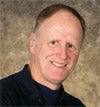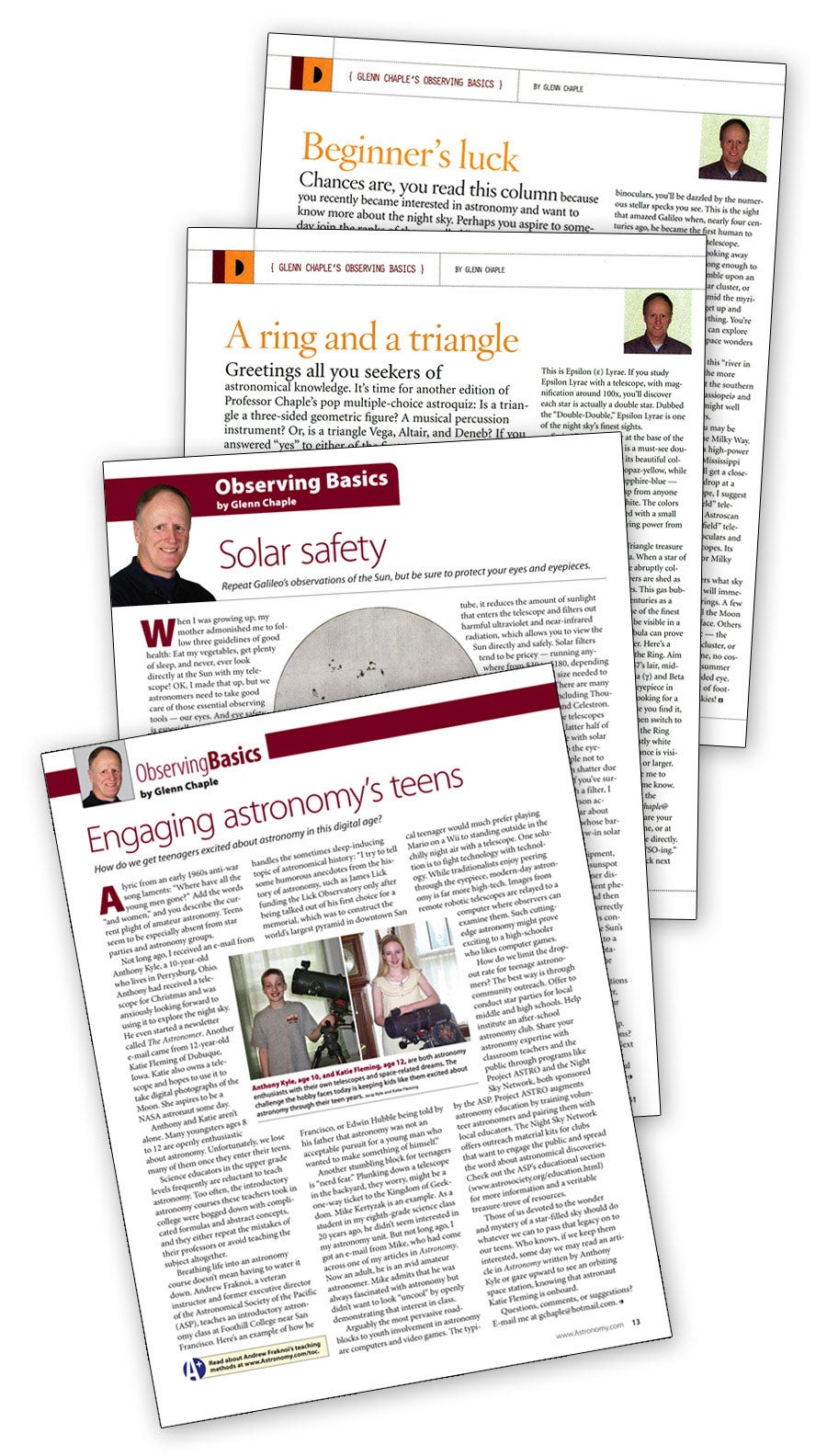The column, then known as “Beginner’s Sky,” took the form of a diary in which Burstein described his adventures as a neophyte backyard astronomer. I couldn’t use this approach. With more than 30 years of experience as an amateur astronomer, I hardly qualified as a beginner. Fortunately, I could recall in vivid detail my early trials and tribulations. I also played on the fact that, in some aspects of amateur astronomy, I’m still wet behind the ears. “Observing Basics” has therefore evolved into a column not only for the rank beginner but also for the beginner in each of us.
Of the 120 “Observing Basics” columns I’ve written, two stand out as personal favorites. With “Beginner’s luck” (September 2003), I introduced what is to me the most pleasurable of all astronomical activities: a summertime binocular “cruise” along the Milky Way. I hope I inspired some of you to try it — it’s an experience that awes both the eyes and the mind. More recently, I chronicled the adventures I shared with my lifelong astronomical companion: a modest 3-inch Edmund Scientific reflecting telescope (“Size doesn’t have to matter,” April 2011). By emphasizing its attributes — modest cost, portability, ease of use, and the sheer multitude of sky objects within its grasp — I hoped to encourage the beginner to start out with a small-aperture telescope and the veteran to pull that old 60mm refractor out of the closet and put it back to use.
While most “Observing Basics” columns elicit some form of reader response, four resulted in more emails than I had anticipated. In the February 2007 column, “Watching the sky move,” I noted how, if patient, you can detect with unaided eye the apparent motion of sky objects as Earth rotates. A surprising number of responses prompted the follow-up “Having an Earth-moving experience” in July of that year.
Two years later, “Solar safety” (July 2009) concluded with a request for reader input on the dangers of screw-in solar filters. Six months later, “Screw-in solar filter hazards” summarized their reports — all providing firsthand proof that observers should never use these cheap accessories.
Later that year, I lamented the decline of young people getting involved in astronomy (“Engaging astronomy’s teens,” September 2010) and was pleasantly surprised to hear from several astronomy-engaged teens. What followed was the upbeat sequel “Teen triumphs” (March 2011).
You can’t write a column for 10 years without a few mea culpas, though. For example, I once had the audacity to claim that at least a 6-inch telescope is necessary to capture the true annular appearance of the Ring Nebula (“A ring and a triangle,” August 2004). This spawned some Internet chatter, including a post from a person who wondered if I’d ever even seen M57. Someone came to my defense, commenting that perhaps “Chaple deliberately understates what is visible in a column that is designed for beginners.” This is true. Also, I had seen the Ring Nebula hundreds of times, but I never could definitively make out its “ring-ness” through small-aperture telescopes. So I took the stance of the umpire or referee who “calls ’em as he sees ’em.” About a year after I wrote that article, however, I clearly made out the ring with a friend’s 3-inch refractor under typical suburban skies. Mea culpa!
This 10-year voyage has taken the readers and me on a visual journey ranging from meteors dancing a few dozen miles above our heads to the quasar 3C 273, 2 billion light-years distant. We’ve kept close watch on the heavens with unaided eyes, binoculars, and telescopes, and we’ve covered the “how-tos” of backyard astronomy, from telescope care to selection of eyepieces and other accessories.
A recurring “Observing Basics” theme has been astronomy outreach — the need to ensure that future generations embrace astronomy as a profession or hobby. But we need to do more. It’s a big universe, and astronomy is a multifaceted hobby. Topics have yet to be explored, and many need revisiting. That’s why I’m thankful to all of you who’ve responded to columns I’ve written, whether it be to expound on a topic you found interesting, to suggest a subject I haven’t covered, or to take me to task for an occasional mistake. All help me to steer this column into areas you find relevant.
Time flies. But there’s another saying about time that better sums up my first 10 years with “Observing Basics”: Time flies when you’re having fun.
Questions, comments, or suggestions? Email me at gchaple@hotmail.com. Next month: my “Prime 9” star party targets. Clear skies!











